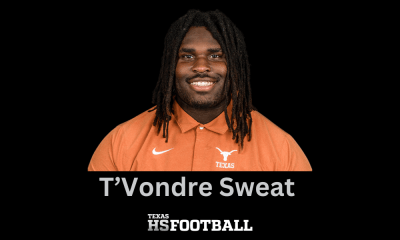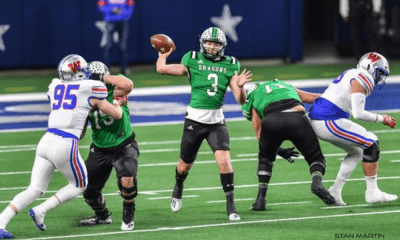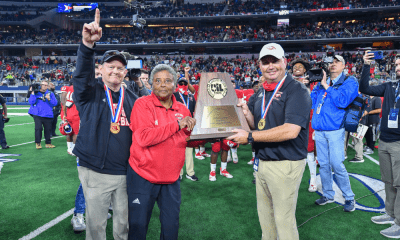
On June 12, amid the Black Lives Matter movement (BLM), University of Texas student-athletes banded together producing a list of demands for the university regarding racial and social injustice. Among that list was renaming certain buildings, replacing statues that represent confederate members, funding outreach programs and replacing the popular fight song “The Eyes of Texas”. On July 13, university officials answered the list of demands with a statement from UT interim president Jay Hartzell.
“I went into [conversations with faculty, students, alumni, and staff] understanding that UT has worked hard in recent decades to become a more diverse and welcoming campus. I came out of them realizing there is still more work to do — and that this work starts and ends by creating an environment in which students, faculty and staff are fully supported before, during and after their time at UT,” wrote Hartzell. You can find the full statement here (https://president.utexas.edu/messages-speeches-2020/a-more-diverse-and-welcoming-campus).
Hartzell says the university plans to make a multi-million dollar investment to programs that recruit, retain, and support black students. The plan as it is set will rename the Robert L. Moore Building as the Physics, Math, and Astronomy Building. The university will also honor Heman M. Sweatt in multiple ways including placing a statue of Sweatt in front of T.S. Painter Hall. In 1946, Sweatt was denied entrance into the law program on the basis of race before taking legal action in the case known as Sweatt v. Painter in which the Supreme Court made it possible for Sweatt to become the university’s first African American UT Law student.
In addition to the changes mentioned above, the university will honor the Precursors— the first black undergraduates to attend The University of Texas at Austin— with a monument on the East Mall. Another notable change will be the erection of a statue for Julius Whittier. Whittier became the Longhorns’ first black player to letter in football in 1970. Whittier was a native of San Antonio where he graduated from Highland High School in 1969. According to UT athletics, upon attending, Whittier became one of the first black players to receive a football scholarship. Whittier was a three year letterman where he played offensive tackle in 1970 and 1971 before transitioning to tight end for his senior season in 1972. During his career at Texas, the Longhorns posted a 28-5 overall record and a 20-1 record in the Southwest Conference (SWC). Whittier won back-to-back National Championship titles with Texas in 1970 and 1971. In 2013, Whittier was honored with a spot in the Longhorn Hall of Honor and in 2018 he was inducted into the San Antonio Independent School District Hall of Fame.
Texas officials also plan to change the name of Joe Jamail Field— as suggested by the Jamail family— to honor Earl Campbell and Ricky Williams. Campbell and Williams both earned Heisman Trophies while playing for the Longhorns.
Campbell, a Texas High School football alumni and Tyler native, graduated from John Tyler High School in 1974 before joining the program as a running back. With Texas, Earl “The Tyler Rose” Campbell posted 4443 rushing yards, 128 receiving yards, and 41 touchdowns. In 1977, Campbell earned the Heisman Trophy. Campbell went on to play in the National Football League (NFL) for the Houston Oilers and New Orleans Saints. Campbell was inducted into the College Football Hall of Fame in 1990 and the Pro Football Hall of Fame in 1991.
“Ricky and I have stood on this iconic field for many important points of our lives,” Campbell said in a statement. “We never would have envisioned that this historic site would one day bear our names. The symbolism of this honor transcends the recognition of the Heisman Trophies we received. It extends to all students, but specifically black athletes, who continue to work to define our collective motto: ‘Winning with integrity’.” Campbell went on to recognize the Joe Jamail family for requesting the change. “Joe was always known as being a passionate, aggressive advocate of truth,” Campbell said. “We know he would have been proud to see this day arrive, both as a lawyer and a Longhorn.”
University of Texas announcing that it is renaming Joe Jamail Field at DKR- Texas Memorial Stadium to honor both Earl Campbell and Ricky Williams. pic.twitter.com/9qw5p7hqeb
— Daniel Gotera (@DTGoteraKHOU) July 13, 2020
One of the most controversial topics on the list of demands that many fans have pushed back against since the announcement is the removal of “The Eyes of Texas” as the school song. Hartzell says the song will remain.
“‘The Eyes of Texas,’ in its current form, will continue to be our alma mater,” he wrote. “Aspects of its origin, whether previously widely known or unknown, have created a rift in how the song is understood and celebrated, and that must be fixed. It is my belief that we can effectively reclaim and redefine what this song stands for by first owning and acknowledging its history in a way that is open and transparent. Together, we have the power to define what the Eyes of Texas expect of us, what they demand of us, and what standard they hold us to now. ‘The Eyes of Texas’ should not only unite us, but hold all of us accountable to our institution’s core values. But we first must own the history. Only then can we reimagine its future, and I look forward to partnering with our campus community to do just that.”
Longhorn football head coach Tom Herman tweeted out his reaction to the changes on Monday:
So very proud of our players, all Texas student-athletes, our entire student population and university leadership. They will forever be known for being responsible for tangible, positive change on our great campus. Today is a great first step. #HookEm 🤘🏼 https://t.co/ftYQpgPk3G
— Coach Tom Herman (@CoachTomHerman) July 13, 2020
Many Texas High School football alumi tweeted out their reactions as well.
Junior DB Caden Sterns who played high school football at Cibolo Steele High School tweeted:
Great day to be a Longhorn, want to thank the students, athletes, administration, alumni and those behind the scenes working who made this happen. Looking forward to make more positive change on campus. Hook’Em. https://t.co/YXqNyiJlgM
— Caden Sterns (@CSterns_7) July 13, 2020
Redshirt junior DB Josh Thompson who played high school football at Nacogdoches High School tweeted:
— Josh Thompson (@_Joshuat9) July 13, 2020
Redshirt freshman WR Jordan Whittington who played high school football at Cuero High School tweeted:
— Jordan Whittington (@J_Whitt3) July 13, 2020

















